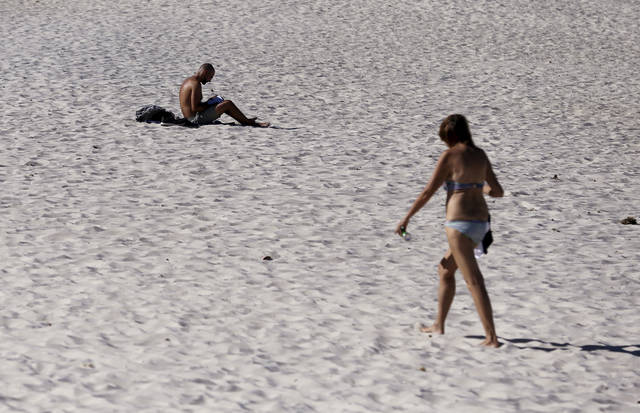CANBERRA, Australia — Australia sweltered through its hottest month on record in January and the summer of extremes continued with wildfires razing the drought-parched south and flooding in expanses of the tropical north.
Australia’s Bureau of Meteorology confirmed the January record on Friday as parts of the northern hemisphere had record cold.
Australia’s scorching start to 2019 — in which the mean temperature across the country for the first time exceeded 30 degrees Celsius (86 degrees Fahrenheit) — followed Australia’s third-hottest year on record. Only 2005 and 2013 were warmer than 2018, which ended with the hottest December on record.
Heat-stressed bats dropped dead from trees by the thousands in Victoria state and bitumen roads melted in New South Wales during heatwaves last month.
The South Australia state capital Adelaide on Jan. 24 recorded the hottest day ever for a major Australian city — a searing 46.6 C (115.9 F).
On the same day, the South Australian town of Port Augusta, population 15,000, recorded 49.5 C (121.1 F) — the highest maximum anywhere in Australia last month.
Bureau senior climatologist Andrew Watkins described January’s heat as unprecedented.
“We saw heatwave conditions affect large parts of the country through most of the month, with records broken for both duration and also individual daily extremes,” Watkins said in a statement.
The main contributor to the heat was a persistent high-pressure system over the Tasman Sea between Australia and New Zealand that blocked cold fronts from reaching southern Australia.
Rainfall was below-average for most of the country, but the monsoonal trough has brought flooding rains to northern Queensland state in the past week, leading to a disaster declaration around the city of Townsville.
Queensland’s flooded Daintree River reached a 118-year high this week.
Emergency services reported rescuing 28 people from floodwaters in the past week.
“The vast bulk of the population will not have experienced this type of event in their lifetime,” State Disaster Coordinator Bob Gee told reporters, referring to the extraordinary flooding.
In the southern island state of Tasmania, authorities are hoping rain will douse around 40 fires that have razed 178,000 hectares (690 square miles) of forest and farmland in recent days. Dozens of houses have been destroyed by fires and flooding in recent weeks.
The Climate Council, an Australian independent organization formed to provide authoritative climate change information to the public, said the January heat record showed the government needed to curb Australia’s greenhouse gas emissions which have increased during each of the past four years.
“Climate change is cranking up the intensity of extreme heat, and January’s record-breaking month is part of a sharp, long-term upswing in temperatures driven primarily from the burning of fossil fuels,” the council’s acting chief executive Martin Rice said in a statement.


